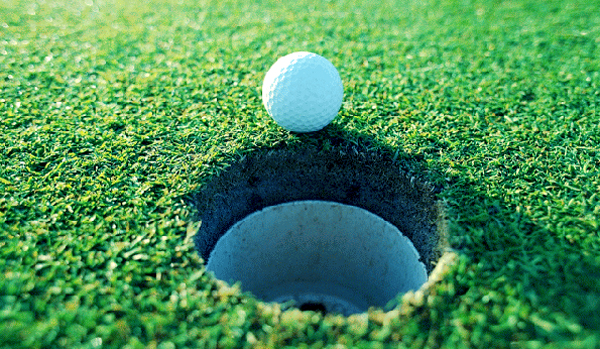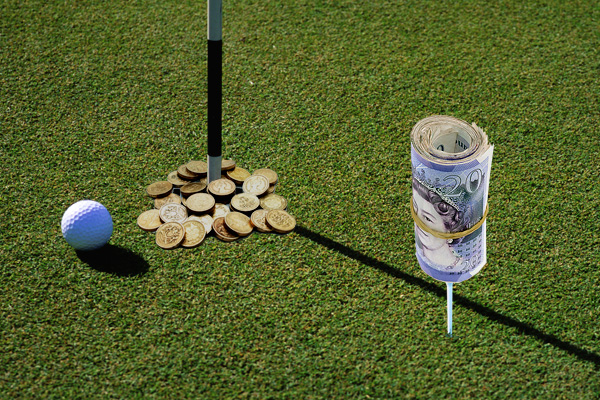One of golf’s most well known sayings is “drive for show and putt for dough” and while this has long been considered a universal golfing truth, recent studies suggest that it could in actual fact be one of the game’s biggest myths.
While we might be a long way off being able to prove that golfers, including us lowly amateurs, actually drive for dough and putt for show, recent studies into golf statistics suggest that might just be the case. At the very least, there is evidence that points strongly towards the fact that you simply can’t “putt for dough” if you can’t “drive for show”.
Professional Golf Tours have long been measuring player’s performances using a set of; let’s face it, rather rudimentary statistical categories. While it might be useful for a golfer to track things like Greens in Regulation % and Number of Putts per Round over an extended period of time, it also must be noted that these statistics can be misleading.
For example, if a golfer takes 22 putts in a round most people would assume that their putting is in excellent working order but what if that player had missed 14 greens in regulation and chipped wonderfully, leaving themselves just simple tap-ins on the majority of the greens? All of a sudden, an impressive amount of one-putts becomes slightly less meaningful.

It’s true that a tap-in putt counts the same as a 300 yard drive if both go well…but does the putt carry the same risk as the drive?
In an effort to place some perspective on these potentially misleading stats, Mark Broadie, a professor at Columbia Business School and a keen 4 handicap golfer, is carrying out ongoing research relating to the number of strokes gained and lost by a player in all parts of the game.
Broadie’s research might be ongoing but it has already gained credence with the powers that be in golf. In spring 2011, the PGA Tour introduced the Shots Gained Putting statistic and since its inception it has gained credibility among commentators, analysts and players.
In the instance of the PGA, Strokes Gained Putting is a measurement of how a player performs on the greens in relation to an average number of putts a PGA TOUR player SHOULD take from every distance. All of the figures are based on ShotLink (this tracks every shot taken by players competing on major golf tours) data from the previous season. The number of putts taken by a player is then subtracted from this average value to determine the number of strokes they have gained or lost.
For example, if the average number of putts required to hole out from 10 feet is 1.5, a player one-putting from this distance will gain 0.5 strokes. Those who two-putt lose 0.5 strokes. Take three putts and you have lost a meaty 1.5 strokes and so on and so forth.
The strokes gained concept can also be applied to all parts of the game; not just putting. Without going into too much mathematical depth – mainly because that’s when I start to get confused – Broadie’s equation assigns a precise mathematical value to each and every shot hit – hence the name of his latest book “Every Shot Counts” – in relation to scratch on a given hole.
Every swing then, either gains stroke value or loses stroke value (more likely to be the case among us “handicap golfers”!) compared to scratch. The closer a swing gets you to the hole without finding trouble, the higher the value.
With a credible system in place to quantify any given golf shot’s value, Broadie reviewed a mountain of data collected from a wide range of golfers over a considerable period of time and found that golfers of all levels were losing more strokes in the long game than in the short game.

While he states that practicing the short game is still important, the biggest improvements in scoring, according to Broadie, come as a result of long, straight driving.
For example, Broadie has found that out of the amount of shots a high-handicapper might lose to a scratch golfer, a greater proportion of them will be as a result of their long game than their short game (shots from within 100 yards according to Broadie’s definition).
Also taken into account are the effects of shots that are “awful” or “doubly awful”, according to Broadie’s terminology. Essentially Broadie argues that a 300 yard drive that sails out of bounds is worse than an air shot…even if it’s far less embarrassing. While it is obvious that “awful” shots can potentially be played anywhere on the course, Broadie’s research shows that the vast majority are a result of the long game rather than the short game.
He has also highlighted a direct correlation between long, straight driving and lower scores.
Broadie states, “If your typical drive is 220 yards, you’re shooting in the 100s or 90s, and maybe the 80s. But you’re not in the 70s. No matter how good your short game is, there’s a scoring ceiling that relates to distance. You need length and accuracy off the tee to give your short game the chance to post good numbers.”
Essentially, better golfers actually drive for dough and putt for show. Not conventional wisdom I know but how can you argue with cold hard facts?
If the maths doesn’t convince you then consider this. If you were to take on Tiger Woods in a match, would you choose to do so on the practice putting green or the actual course? If you wanted to have any chance whatsoever of winning against the world’s best golfer, you’d choose the putting green every time.
Henry Cotton once said, “Every shot counts. The three-foot putt is as important as the 300-yard drive.” If you’re a believer in Broadie’s findings – you’ll have to read his book to decide whether you are or not – you might have figured that that’s a load of old cobblers.





Hi I think you need to be good at both as whats the point of being a great putter but you are always playing your 2nd/3rd shot from the rough or the trees as you can’t drive for toffee and vice versa.
Thanks for your comment Jason.
I think what Broadie’s reserach is suggesting is that, if you were to take any given golfer, and compared one round in which they played poorly from the tee with another where they putting badly, the poor putting round would feature fewer dropped shots…hitting your ball out of Bounds, into bunkers or water hazards and chipping out from the trees generally is more costly than three putting!
Having said that, I agree with you that all parts of the game are important.
Rory
Your Golf Travel